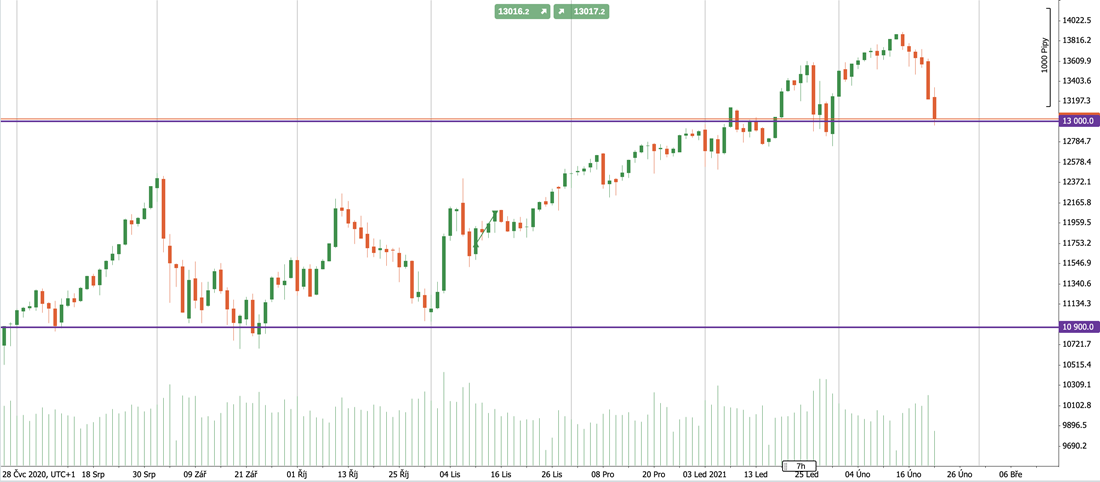Will the sale on technology stocks continue?
Technology stocks followed in the same underperforming tempo as last week and entered the new week with a sell-off, which is accelerating the second session this week. The reason is again higher yields on US government bonds and the flow of capital into value stocks, where investors see much more room for growth. How far will the decline in technology continue, and are we at the beginning of a larger decline? These are the main issues of recent days.
Higher yields at the beginning of the correction
If the Nasdaq technology index closes today's session in the red, it will be the sixth consecutive loss session. It will be the longest decline since October when the index corrected after approaching a record high. Since the beginning of last week, the Nasdaq has weakened by 5.8%, registering a similar decline in early September. The main reason for the decline is rising yields on US government bonds. The ten-year yield has already exceeded 1.37%, and the growth rate is particularly worrying. It is precisely technological titles that are strongly dependent on low borrowing costs, and since then there have been extremely popular titles, which have reached new historical highs several times.
How are optimistic expectations reflected in the market?
Not only that higher yields do not only mean an increase in economic rates but they also reflect the general mood in the market. Investors no longer want to hold safe government bonds, and yields are rising as demand falls. This reflects better expectations of a faster economic recovery, and investors are shifting their focus to value stocks, where they still see interesting room for growth. Higher yields also predict faster inflation, and many investors fear that the Fed may be forced to start raising interest rates, although it has announced in advance that it does not plan to do so. At the same time, cyclical and value stocks are likely to start to prosper more in the coming months thanks to gradual vaccination and warmer weather which will loosen widespread restrictions. Thus, the markets again show how they work with expectations and react to the gradual overflow of capital from overpriced technology stocks.
Correction as an opportunity?
Companies such as Apple, Amazon, Facebook, Netflix, and Tesla came under strong pressure. Here, however, we come to the question of how long the sale can continue and whether it will continue at all. There is no doubt that technology titles, especially in the United States, are extremely overpriced. The correction thus really makes sense, although traditional indicators such as P / E, which show extreme overpricing, are no longer so crucial for future development. However, we must not forget the recently published 4Q results. While technology stocks have benefited from the pandemic, no massive change in the consumer behavior can be expected. Amazon and Apple have outperformed $ 100 billion in revenue in the last quarter, and it's hard to imagine that their growth will suddenly slow. The lower prices of these titles are likely to attract investors who take advantage of lower awards. It is necessary to get through the initial nervousness, but if some investor has similar titles in their portfolio, he will most probably gradually increase his position.
Chart: Nasdaq Daily Chart (Source: PurpleTrading cTrader)

Higher yields can thus “frighten” markets in the short term and could actually cause greater sell-offs if they grow faster. In the long run, however, the market should be able to cope with them, and higher profits will be able to offset higher rates in the economy thanks to the economic recovery. In the case of the Nasdaq index, it pays to wait a little longer and start building a position on one of the nearest price supports, such as the round number of 13,000 points.